Dimorphic Fungi Study Aids
1/42
There's no tags or description
Looks like no tags are added yet.
Name | Mastery | Learn | Test | Matching | Spaced |
|---|
No study sessions yet.
43 Terms
What does Blastomyces dermatitidis cause?
Blastomycosis
What is Blastomycosis?
A chronic infection throughout the body characterized by granulomatous lesions
Where is blastomycosis primarily located?
Lungs, skin, and bones
How does Blastomyces dermatiditis grow?
Slowly
Describe the appearance of blastomyces dermatitidis at 25 degrees Celsius
Yeast-like
Prickly
Cottony
Aerial mycelium turns tan or brown with age
Describe the appearance of Blastomyces dermatitidis at 37 degrees Celsius
Cream to tan in color
Heaped or wrinkled
Waxy
What can inhibit the yeast phase of Blastomyces dermatitidis?
Chloramphenicol
Cyclohexamide
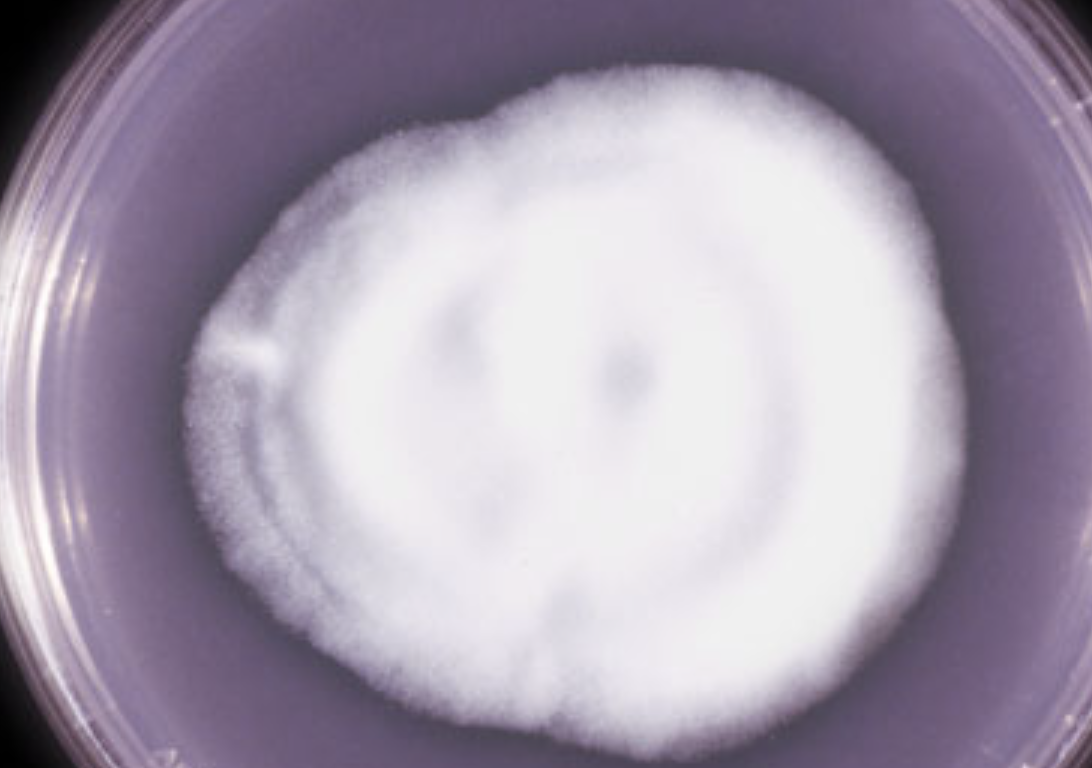
What organism is this? What temperature?
Blastomyces dermatitidis at 25 degrees Celsius
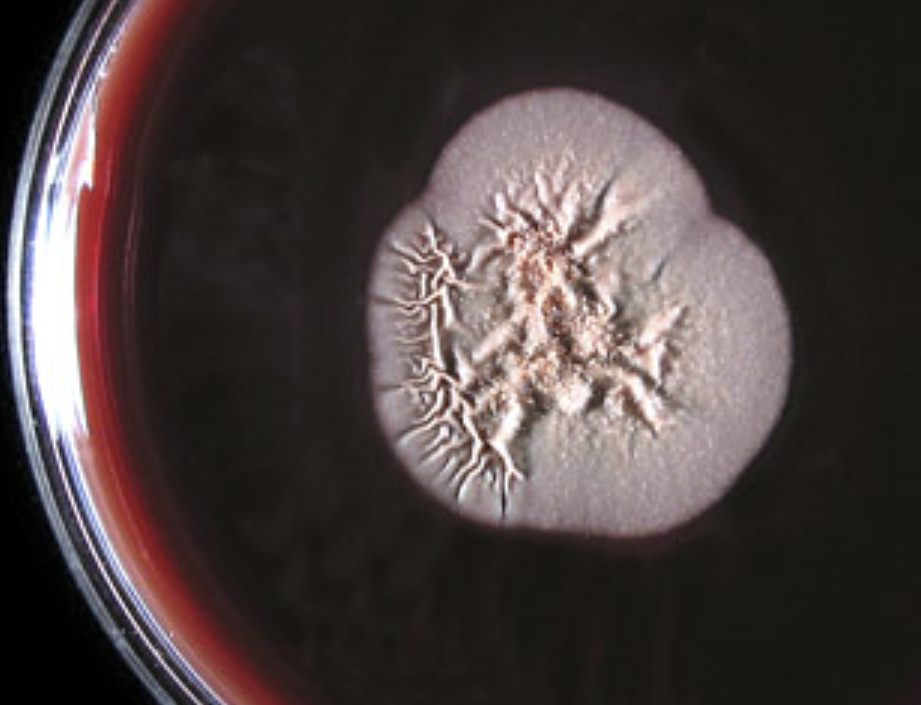
What organism is this, and at what temperature?
Blastomyces dermatitidis at 37 degrees Celsius
What is the microscopic morphology of Blastomyces dermatiditis at 25 degrees Celsius?
Septate hyphae with round or pear shaped conidia
What is the microscopic morphology of Blastomyces dermatitidis at 37 degrees Celsius?
Broad-based walls with thick buds
What organism can Blastomyces dermatiditis often be confused with?
Chrysosporium

What organism is this?
Blastomyces dermatitidis
What is the clinical significance of coccidiodes immitus?
It causes coccidiodomycosis
What is coccidiodomycosis?
A highly infectious disease that can be acute or chronic, benign or fatal. Can infect multiple body systems. Endemic to arid SW US
Describe the macroscopic appearance of Coccidiodes immitus at 27 and 37 degrees
White, aerial, cottony mycelium that turns tan to brown with age
How quickly does Coccidiodes immitus grow?
3-5 days, but arthrospore production may take 1-2 weeks
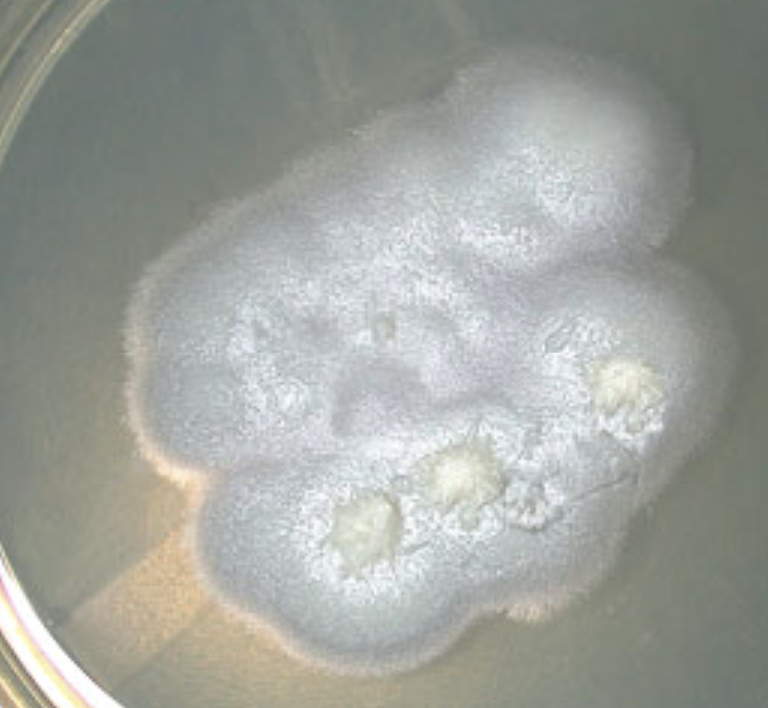
What organism is this?
Coccidiodes immitus
Describe the microscopic appearance of coccidiodes immitus
Course, septate, branched hyphae with arthrospores alternating with empty disjunctor cells.
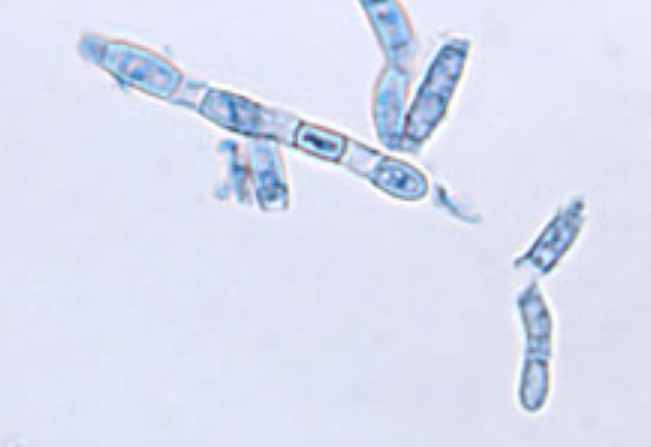
What organism is this?
Coccidiodes immitus
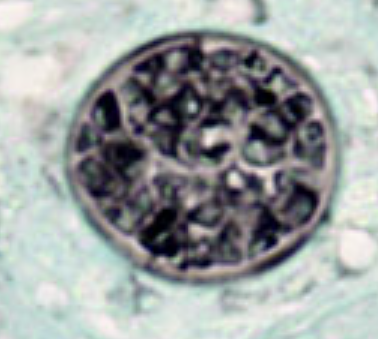
What organism is this?
Spherule of coccidiodes immitus
What is the clinical significance of Histoplasma capsulatum?
Histoplasmosis
What is Histoplasmosis?
Can be acute, benign pulmonary disease or chronic and fatal.
How quickly does Histoplasma capsulatum grow?
Slowly
Describe the macroscopic appearance of H. capsulatum at 25 degrees Celsius
White cottony mycelia
Describe the appearance of H. capsulatum at 37 degrees Celsius
Moist, white, yeast-like colonies
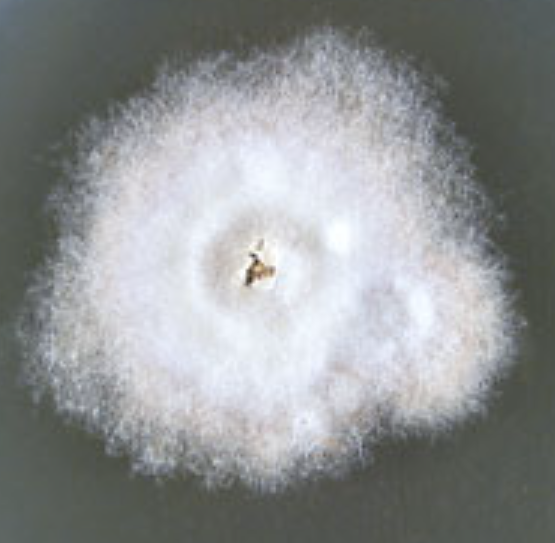
What organism is this? What temperature?
H. capsulatum at 25 degrees
Describe the microscopic structure of H. capsulatum at 25 degrees in young cultures
Round to smooth, pear-shaped, spiny microconidia
Describe the microscopic structure of H. capsulatum at 25 degrees in mature cultures
Tuberculate macroconidia (flower)
Describe the microscopic morphology of H. capsulatum at 37 degrees Celsius
Small, round budding cells
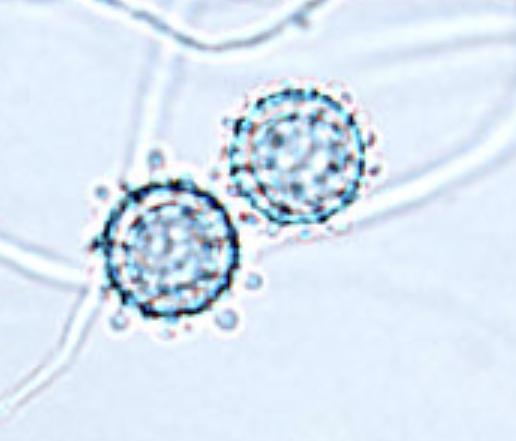
What organism is this, and at what temperature?
H. capsulatum 25 degrees celsius (mature)

What organism is this, and what temperature?
H. capsulatum at 37 degrees Celsius
What is the clinical significance of Sporothrix schenckii?
Causes sporotrichosis
What is Sporotrichosis?
A chronic infection that begins as a skin lesion and then involves lymphatic channels that drain the area
Describe the macroscopic appearance of Sporothrix schenckii at 25 degrees celsius in young cultures
Small and white
Describe the macroscopic morphology of Sporothrix schenckii at 25 degrees when the colony ages
Moist, wrinkled, leathery or velvety, darkening to brown/black
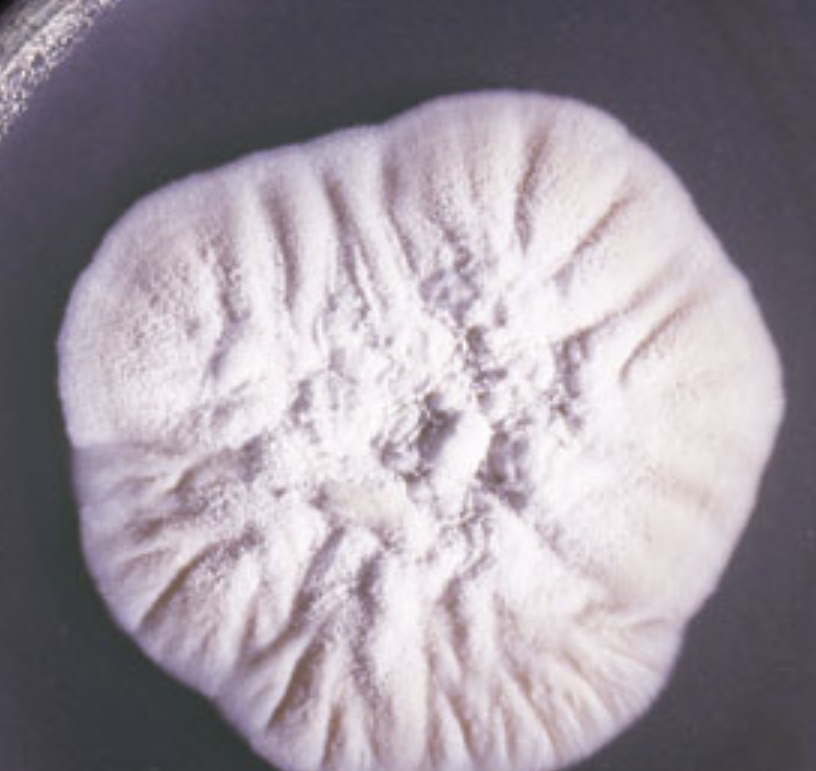
What organism is this? Obverse or reverse?
Sporothrix schenckii obverse

What organism is this? Obverse or reverse?
Sporothrix Schenckii reverse
Describe the macroscopic appearance of Sporothrix Schenckii at 37 degrees Celsius
Tan, smooth, yeast-like
Describe the microscopic morphology of Sporothrix Schenckii at 25 degrees Celsius
Pear-shaped conidia in rosette-like clusters
Describe the microscopic morphology of Sporothrix schenckii at 37 degrees Celsius
Oval fusiform budding cells “Cigar bodies”
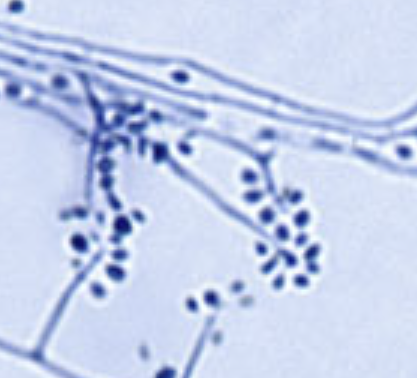
What organism is this, and at what temperature?
Sporothrix schenckii at 25 degrees Celsius

What organism is this and what temperature?
Sporothrix schenckii 37 degrees Celsius